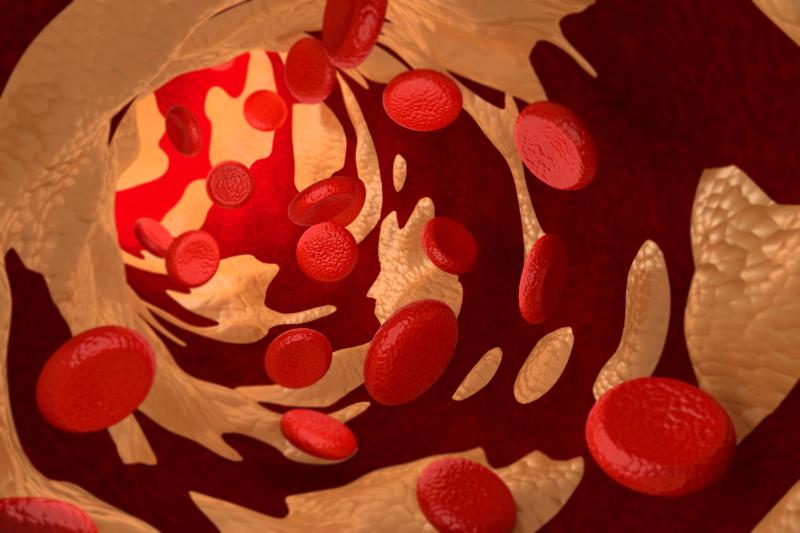 Stem cells have been found to be responsible for calcification in arteries of patients with chronic kidney disease
Stem cells have been found to be responsible for calcification in arteries of patients with chronic kidney diseaseLow-density lipoprotein cholesterol (LDL-C) levels after myocardial infarction (MI) have little value in identifying patients at high risk of recurrent atherosclerotic cardiovascular disease (rASCVD), a recent study has shown.
The study included 25,643 patients (median age, 63.3 years; 27 percent female) who survived their first-ever MI attack and were attending hospital revisits. The correlation between concentrations of lipid biomarkers, such as LDL-C, high-density lipoprotein cholesterol (HDL-C) and total cholesterol (TC), with the risk of rASCVD was assessed.
Over a median follow-up of 4.1 years, there were 2,173 cases of rASCVD, resulting in an overall incidence rate of 8.5 percent. No clear patterns of recurrence could be discerned when analysis was performed according to quintiles of LDL-C.
In contrast, rASCVD rates reliably increased according to categories of triglycerides, increasing from 17.6 event per 1,000 person-years in the bottom quintile to 24.1 events per 1,000 person-years at the top. Risk, as quantified by Cox proportional hazards models, scaled similarly across the triglyceride categories.
“Our data question the importance of LDL-C levels achieved at the first revisit post-MI for identifying high-risk patients and for decisions on continued treatment intensity,” said researchers.
“The incremental predictive value of LDL-C was minor when assessed together with other cardiovascular risk factors,” they added. “LDL-C was not superior to levels of TC, HDL-C or triglycerides for risk assessment in this nationwide cohort of first ever MI patients.”